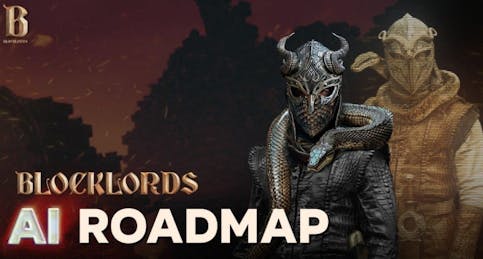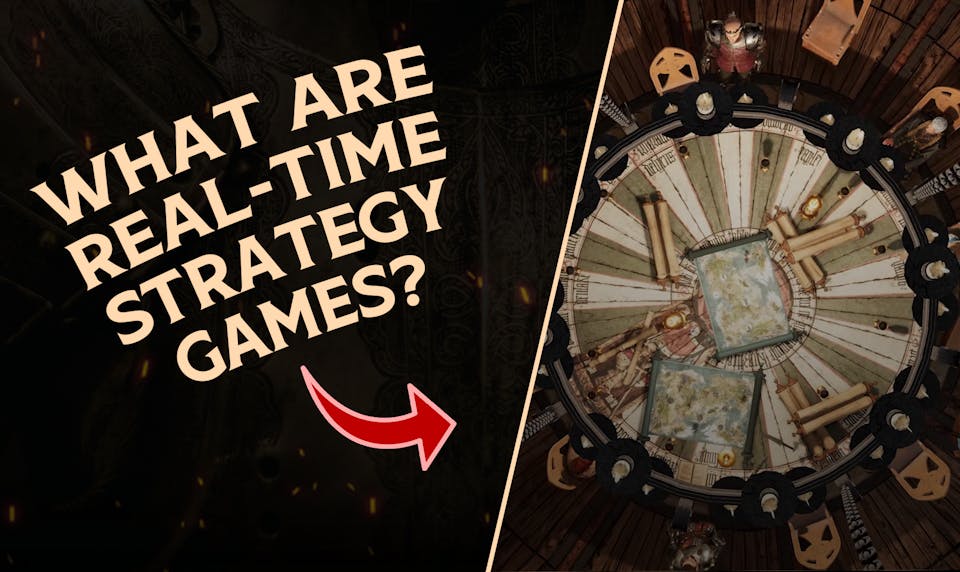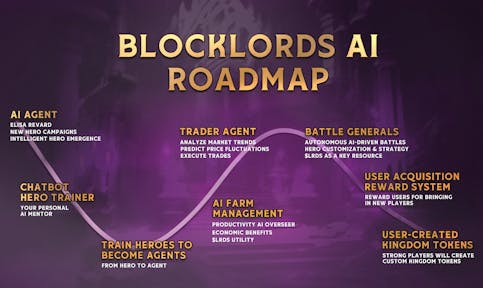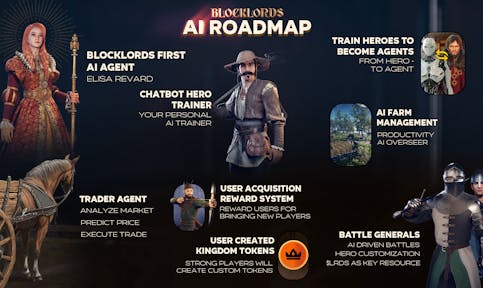14.02.2025
news
4 mins read

14.02.2025
news
4 mins read
BLOCKLORDS ushers in the AI era
How does AI reshape the future of strategy games?
02.06.2023
news

Real-time strategy (RTS) games are a branch of the ever-loved strategy game genre that offer players the opportunity to experience thrilling battles, complex strategies, and immersive storylines. As BLOCKLORDS proudly identifies with the RTS genre, we will explore the world of RTS games, starting with the basics of what an RTS game is and moving on to more advanced topics like game mechanics and strategies
An RTS game is a type of video game where players control armies and engage in battles against opponents in real-time. Unlike turn-based strategy games, where players take turns making moves, RTS games require players to make decisions and take actions quickly and strategically, and adds suspense and excitement to the genre.
Typically, when playing an RTS game, you begin with a base, which must be expanded and defended, whilst simultaneously building an army to attack their opponents and managing a plethora of resources to build structures and units. RTS games have so many moving parts that it can be hard to keep on top of them all - but thats the fun of it! Pushing yourself to the limit, and outwitting your opponent is the name of the game
Real-time strategy (RTS) games first emerged in the mid-1990s and has since grown in popularity, becoming a mainstay of competitive gaming.
The first commercial RTS game was Dune II, released by Westwood Studios in 1992. It was set in Frank Herbert's Dune universe and featured real-time gameplay with resource management and base-building elements. Dune II's success spurred the development of other early RTS titles, including Warcraft: Orcs & Humans and Command & Conquer.
The late 1990s saw the release of several critically acclaimed RTS games, including Age of Empires, StarCraft, and Total Annihilation. These games introduced new gameplay mechanics, improved graphics, and expanded multiplayer options. StarCraft, in particular, became a cultural phenomenon in South Korea, where it remains a major E-sport to this day.
The 2000s saw the rise of new franchises like Company of Heroes, Warhammer 40,000: Dawn of War, and the Total War series. These games emphasised tactical gameplay and placed a greater emphasis on unit abilities and terrain.
In recent years, the RTS genre has undergone some changes, with games like Grey Goo and Ashes of the Singularity introducing new gameplay mechanics and unique twists on the traditional RTS formula. The genre has also experienced a resurgence in popularity with the release of remastered versions of classic titles like Age of Empires II and Warcraft III.
Generally RTS games feature a variety of mechanics that players must master in order to be successful. These game mechanics include resource management, base building, unit production, and combat. In BLOCKLORDS, we have unique game mechanics, such as Might.
Resource management is a foundational aspect of any RTS game. Players must gather resources such as build structures and produce units. The key to successful resource management is balancing the needs of the base with the needs of the army. It's all part of making strategic decisions, and optimising your resource allocation to ensure their base is well-defended and their army is powerful enough to attack their opponents. Without this, most of your efforts are squat!
Base building is another important mechanic in RTS games. Players must construct buildings to produce units, research upgrades, and defend their base. The layout of the base is also important, as it can affect the effectiveness of defences and the flow of units. In BLOCKLORDS there are [X] different style of building, each with their own unique traits and uses
Unit production is a key part of traditional RTS game. Players must produce units such as soldiers, tanks, and aircraft, or whatever the mode of attack is in the given realm, to attack their opponents and defend their own base. Each unit tends to have their own unique traits and characteristics, so being able to strategically plan your unit production is imperative to your success.
Combat is the ultimate goal in any RTS game - and where the fun is at. Combat requires careful planning and strategic decision-making, as well as quick reflexes and the ability to adapt to changing situations - in an real-time strategy game, it is the ultimate
The abundance of options in RTS games and the creativity they allow you to have in strategy creation is part of the reason they have been so successful. Here are some of the most popular:
A rush strategy, as the name so kindly portrays, is just to attack the opponent's base quickly. The goal is to catch the opponent off-guard and do as much damage as possible before they can mount any sort of defence.
The turtle strategy - another marvel of intuition. The turtle involves building a heavily fortified base and focusing on defence. The goal is to wear down the opponent's army while protecting your own base, and then hit them when they are out of resources. Not the most exciting gameplay footage has been shot with this, but always a good strategy to deploy when new to a game.
This one is a little more tricky to figure out, the Boom strategy involves focusing on resource gathering and base building early in the game to produce a large, powerful army later on. The goal is to overwhelm the opponent with superior numbers and firepower. They’ll never know what hit em.
Alongside the development of Web3 gaming, Virtual Reality and Augmented Reality are also set to revamp the genre massively, as they offer a completely immersive experience with players able to physically interact with the game world. Additionally, the increasing power of computers and gaming consoles will allow developers to create more complex and visually stunning RTS games. Imagine walking around the BLOCKLORDS universe in real time!
The genre has a bright future, and we are more than happy to be contributing to its evolution
14.02.2025
news
4 mins read

14.02.2025
news
4 mins read
How does AI reshape the future of strategy games?
14.02.2025
news
2 mins read

14.02.2025
news
2 mins read
Blockchaingamer.biz on AI agents in BLOCKLORDS
11.02.2025
news
4 mins read

11.02.2025
news
4 mins read
Age of Intelligent Heroes Begins!